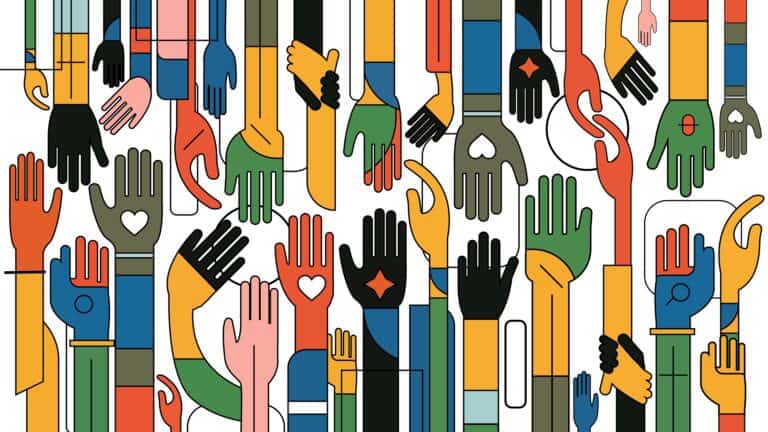Improving Accessibility for All Learners: Our Commitment and Roadmap
At Massage Mastery Online, we believe that every student deserves equal access to high-quality educational resources regardless of ability. That’s why we’re making accessibility a core priority in 2025 and beyond.
As schools increasingly face legal requirements to provide accessible learning environments, we want to keep you informed of the steps we’re taking to meet those standards and support you in meeting yours.
Why Accessibility Matters Now
Accessibility is more than a legal checkbox. For students with visual impairments, motor challenges, cognitive differences, or other disabilities, accessible content can mean the difference between success and struggle.
Several recent developments have raised the stakes:
- WCAG 2.1 Level AA is now the expected benchmark for digital accessibility across higher education.
- Section 508 of the Rehabilitation Act mandates that electronic and information technology used by federal agencies, and by extension, many educational institutions, must be accessible to people with disabilities.
- Legal pressure is increasing. Colleges and universities across the U.S. have faced lawsuits and Office for Civil Rights complaints for inaccessible course materials and digital tools.
We’re here to help ensure that doesn’t happen to you.
Why Digital Textbooks Are the Future of Accessibility
Traditional printed textbooks are, by design, inaccessible. They’re static, heavy, and inflexible, essentially a one-size-fits-all learning tool. Students who struggle with reading, visual processing, or attention simply have to adapt or miss out. Unlike Massage Mastery Online textbooks, printed books have no built-in options for audio narration, video demonstrations, interactive learning, adjustable font size, or even language translation. Regulators don’t hold print materials to accessibility standards, but the moment you move content online, the expectations shift, and so do the possibilities.
That’s exactly why we love digital. Our online textbooks aren’t just compliant; they’re empowering. They can flex to meet diverse learning styles and student needs in a way that printed books never could. Accessibility isn’t just a responsibility; it’s an opportunity to enhance learning for everyone.
Our Accessibility Roadmap
To meet the moment and support our institutional partners, we’ve launched a phased accessibility initiative for 2025:
Phase 1: Immediate Enhancements (Completed)
We’ve installed the Ally accessibility tool across our site. This user-friendly tool gives students control over their experience with features like:
- Keyboard navigation and “Skip to Main Content”
- Adjustable text size, spacing, and alignment
- High-contrast modes and grayscale for low-vision users
- Focus outlines for keyboard users
- A reading guide for attention support
- The option to pause animations or hide images
- Structured sitemap navigation for screen reader use
Go to any page of the site and you’ll see a purple icon on the bottom right of the screen where you can check out these accessibility features for yourself. If you don’t need access to these features, simply click the Hide Widget icon to remove it from view.
While these enhancements greatly improve usability, we view this as a starting point, not a complete solution.
Phase 2: Developer Audit and Deep Improvements (Spring 2025)
We’ve been working with an accessibility expert at TeamTangible, our web development team, who has done a comprehensive accessibility audit (completed April 25, 2025) with the goal of resolving deeper issues that require technical intervention. This includes:
- Optimizing semantic HTML and ARIA roles for better screen reader performance
- Labeling form fields and navigation elements appropriately
- Testing and improving mobile accessibility
- Creating a prioritized plan based on WCAG 2.1 Level AA standards
Phase 3: Ongoing Monitoring and Best Practices (Summer 2025 and Beyond)
Accessibility is not a one-time fix. It’s an ongoing responsibility. We’re committing to:
- Regularly maintaining and improving our accessibility features
- Training our content creators on inclusive digital practices
- Monitoring changes in accessibility law and adapting proactively
- Exploring premium tools to enhance screen reader compatibility and gather accessibility analytics
What This Means for You
If you’re a school administrator, instructor, or compliance officer, we want you to know: we’re in this with you. Our phased strategy is designed to align with institutional accessibility expectations and legal guidelines.
By using our digital textbooks, you’re offering students not only cutting-edge massage education but also a platform that respects their rights and needs.
We’ll continue to keep you updated as each phase progresses and we’re always here to answer your questions.
Thank you for your partnership and for sharing our commitment to inclusive learning.
Textbooks that Meet Required Accessibility Standards
MASSAGE MASTERY: FROM STUDENT TO PROFESSIONAL (2ND EDITION)

This comprehensive textbook by Anne Williams is the perfect choice to teach a strong foundation in both wellness and clinical massage, musculoskeletal injury and rehabilitation, and a range of modalities like Swedish, seated, stone, myofascial release, deep approaches, neuromuscular therapy, spa and Asian bodywork. With just Massage Mastery as your core text and the addition of an A&P book, you’ll have your entire curriculum covered as well as a host of electives.
If you are a school owner, director of education, or are involved in textbook adoptions, we’re happy to provide you with review copies at no cost.


